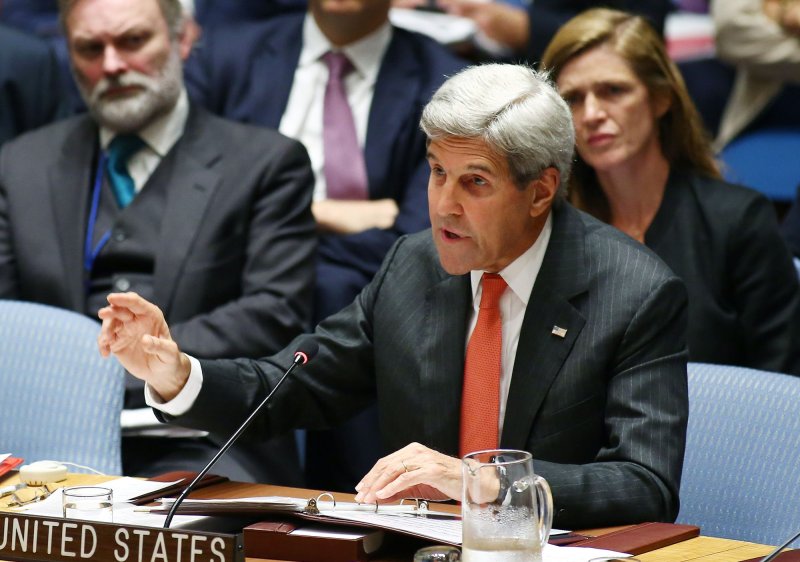As another attempted cease-fire falls apart, the destruction of the Syrian people and state goes on. The country's economy has been annihilated, and the conflict's societal damage will take decades to repair. The need to stop the conflict is paramount – but even though it's vaunted as the worst humanitarian crisis since World War II, it seems as far from a resolution as ever.
Part of what makes this so difficult is the array of external forces involved in the conflict in one way or another. They are fighting to wield influence over the outcome and backing different factions on the ground to try and seize the initiative.
In 2010, the UK's then-foreign secretary, William Hague, spoke about how the world was "networked," saying that to exert influence in the global arena, states and other entities must exert influence over a range of networks. This is a good way of thinking about the conflict in Syria, where a huge range of groups inside and outside the country are now struggling to influence each other.
The networks in Syria are amorphous and perpetually in flux. A huge array of actors are now involved on the ground and from afar, and many increasingly view the conflict as an existential struggle. The complexity of the conflict has resulted in the emergence of a range of different networks, ones that connect groups inside and outside Syria in intricate and volatile ways.
Understanding who wields influence over whom is crucial to understanding the (so far fruitless) diplomatic efforts to resolve the conflict. And to grasp how this all became so complicated, you have to go back to the Arab Uprisings of 2011, when regime-society relations became strained across the Middle East.
Us versus them
At the time, some of the Middle East's bigger players sensed an opportunity to extend their influence across the region by manipulating events in other countries. Saudi Arabia and Iran in particular have spent decades competing for control of the Middle East and the Islamic world, and each saw the Arab Uprisings as an opportunity to weaken the other by supporting assorted groups.
Syria has become one of the key battlegrounds. Along with other Gulf States, Saudi Arabia has supported Syrian opposition groups to challenge Bashar al-Assad, a longtime Iranian ally. In contrast, Iran's continued support of Assad was facilitated by the involvement of Hezbollah, the Lebanese Party of God, which was created with Iranian support in 1982.
To complicate matters, all sorts of other heavyweights are involved, too. Turkey, Russia and the United States are all wading in with competing agendas. Turkey wants to resolve the conflict in a way that doesn't empower its own Kurdish insurgents, who want to secede and form a Kurdish state. Russia, meanwhile, supports Assad, while the United States supports certain opposition groups.
While the United States may align with Saudi Arabia and other Gulf states to support opposition groups, this does not mean that their strategic goals are compatible. Similarly, the latest ill-fated cease-fire saw the United States and Russia come together to target the so-called Islamic State and other extremist groups, but they failed to agree on who the "other" groups should be. They also failed to answer questions about Assad's role in the future of Syria.
Frayed bonds
As the Syrian conflict has become ever more important to this array of powers, they've attempted to exert more and more influence through proxies. The melee of groups operating in Syria provides endless scope for external actors to push their agendas. After all, many of the groups on the ground are in no position to turn down weapons or funding.
Around 60 different factions have been involved in the Syrian conflict at one time or another, meaning outsiders have all sorts of avenues through which to channel influence. But the idea that these groups are solely operating as proxy actors is a misapprehension.
States and other actors outside Syria may be able to exert influence by threatening to withhold various kinds of support from those on the ground, but this is not what's shaping the conflict. It remains true that many of Syria's opposition groups are acting above all in their own interests, not simply doing the bidding of external sponsors.
This is part of the reason that a lasting cease-fire has been so hard to strike. Many of the groups on the ground have become increasingly suspicious of external actors such as the Unite States, whose position has been weakened by inaction – or worse, by apparently allowing or even condoning at least some Russian and Syrian government strikes.
This breakdown of trust is causing serious diplomatic and organisational problems for those notionally working hard to bring the conflict to a halt. And all the while, the people of Syria are caught in the middle.
![]()
Simon Mabon is a lecturer in international relations at Lancaster University. This article was originally published on The Conversation. Read the original article.
Read More
- Topics
- William Hague
- Bashar al-Assad















